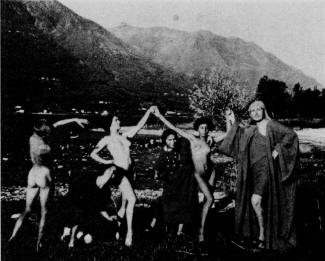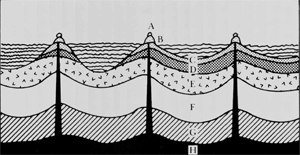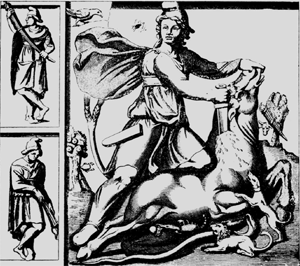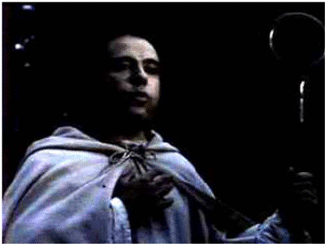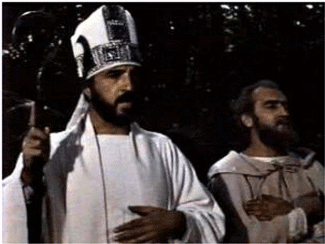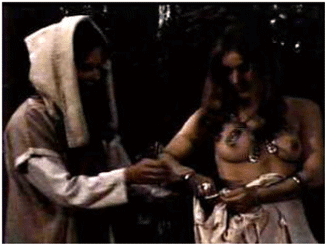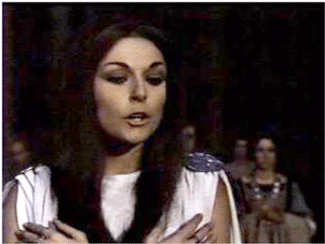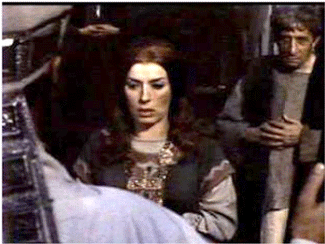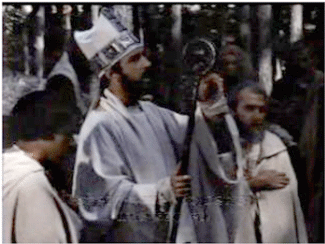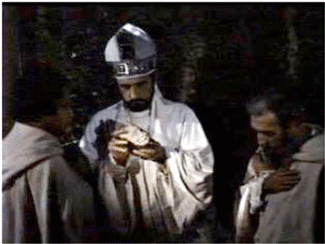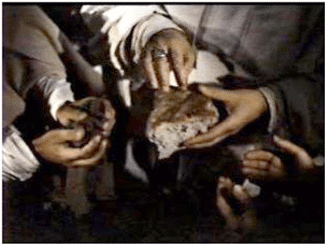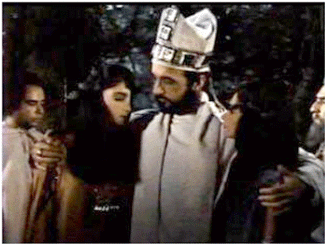JUNG WAS BORN and developed during an era of European history that referred to itself as the fin de siecle -- the end of the century. It was an age of cultural ferment and generational collision in which opposing forces of rationality and irrationality, of social progress and hereditary degeneration, of positivism and occultism, scraped together like great tectonic plates and set off earthquakes and aftershocks that culminated in the Great War and its subsequent revolutions and putsches (Bavaria, Russia, Transylvania, etc.) of 1914-1919 and beyond. These years marked, as the eminent historian George Mosse describes it, the "change in the public spirit of Europe." [1] It has often been said that 1912-1913 saw the intellectual end of the nineteenth century. The years of the Great War were also a period Jung would later refer to as his "confrontation with the unconscious," a time of great personal tumult but also of visionary exploration and self-discovery, indeed an intellectual end to the tyranny of the nineteenth-century embourgeoisement of his own psyche.
These years signaled a turning point from one developmental epoch to another in Jung's life. Just as the Great War seemed to confirm the defeat of nineteenth-century conventional bourgeois morality and cultural and artistic art forms and the ascendancy of the "new ethic" of sexuality and aesthetic styles of the "moderns," so, too, do we find Jung during this period completing the process of shedding the remaining skin of a nineteenth-century conservative bourgeois life-style and reinventing himself as a leader of a movement of modernity that promoted the development of individuality. In this sense, during this period Jung attempted to fully become a modern and developed a practical method for realizing the life-philosophy of the generation of the fin de siecle. [2] However, as many who knew him can attest, he never fully abdicated his persona of nineteenth-century bourgeois respectability despite whatever he enacted in his private life. [3]
Of all the extant biographies of Jung, not one of them places him within the historical context of the fin de siecle. Only the brief but masterful historical studies by Ellenberger attempt such an approach. [4] Such a rendering of Jung as a fin-de-siecle man is crucial for understanding his life's work and especially his fascination with the ancient mysteries.
According to Max Nordau (1849-1923), an acclaimed journalist, social critic, alienist, and defender of bourgeois morality and values against the degeneracy of the moderns, the term fin de siecle "is a name covering both what is characteristic of many modern phenomena, and also the underlying mood which in them finds expression." [5] The modern phenomena he had in mind could be found in "degenerate" movements in art (e.g., Symbolism), literature (Tolstoism, Symbolism, Decadentism, Naturalism, Realism), music ("the Richard Wagner cult," as Nordau refers to it), and philosophy (Schopenhauer, Nietzsche, von Hartmann, Blavatsky, etc.). Nordau's most famous book, Degeneration (1895), is a massive diagnostic assessment of fin-de-siecle European culture according to the prevailing medical and social theories of hereditary degeneration. Nordau's book reflected the overwhelming obsession of the nineteenth century with "hereditary taint" ("bad blood") that could be passed on from the unhealthy existence of one generation to another, in a progressively weaker form, until the family line eventually died out. Modern styles in the arts were seen, by Nordau, as evidence of the extremely prevalent levels of degeneracy in the population of Europe, due to organic brain damage caused by alcoholism, drug addictions, venereal diseases (the continuing legacy of the "sins of the father"), the wear and tear of cramped urban life, and other harmful environmental factors. Although hereditary degeneracy could be slowed in its transmission through "therapeutics" (halting substance abuse, changing living and work conditions, etc.), successive generations were still weakened and would manifest the "stigmata" of physical and especially mental illnesses.
Nordau was perhaps the most famous prophet of doom in an age that was fascinated with ideas of degeneration, decay, and decadence. [6] A common theme that appears again and again in the documents of that time is the idea that European civilization itself was decaying and dying, that industrialization had stolen the soul of humankind, that disease and death were all that anyone could expect from life. "Tell me, my brothers: what do we consider bad and worst of all? Is it not degeneration?" Nietzsche asked a generation of young persons who could understand this sentiment perfectly. [7] Jung certainly did.
The performance arts and literature of this period also reflected the obsession with decay and death. The feeling that one was living at the end of time was reinforced by such cultural events as the premiere of Wagner's opera Gotterdammerung (Twilight of the Gods) on 17 August 1876 at the Festspielhaus, Wagner's temple-theater of Teutonic mysteries in Bayreuth, Germany. Survivors of the brutal Franco-Prussian War of 1870-1871 and the economic depression of 1873 had very recent memories of fearing whether their time on earth was indeed at hand, as the war devastated significant areas of Western Europe and the resulting economic collapse led to further starvation, pestilence, and political instability. In Central Europe in the late 1890s essayists and novelists, influenced by the rejection of the present by Nietzsche in his Also Sprach Zarathustra, expressed a "dystopian condemnation of their own times" that, by the end of the century, was followed by science-fiction novels containing a "dark recounting of society's collapse with visions of a volkisch 'reawakening.''' [8] In addition to the French "decadent" movement [9] and Oscar Wilde's unsubtle, self-deprecating novel of the degeneration of an aesthete, The Picture of Dorian Gray (1890), Irish author Bram Stoker's Dracula appeared in 1897 and has never been out of print since. Dracula, perhaps more than Dorian Gray, is the consummate degenerate, and is described as such by Stoker in the psychiatric language of Nordau and criminal anthropometrics expert Caesare Lombroso (1836-1909). Dracula, king of the vampires, is the perfect fin-de-siecle cultural horror: something living hundreds of years yet dead, something dead but undead, draining the vitality of the living, like European civilization itself.
The age was characterized by an emphasis on the individual to the exclusion of society, exalted to its apogee in the works of Nietzsche, which was largely unread when they came out but "rediscovered" only in the 1890s after he had gone mad. [10] Nietzsche himself had a profound effect on European culture after 1890 with his exciting style of using his "hammer" of questions to smash every cultural idol, including the Judea-Christian images of God. Like other young persons of the 1890s, Jung himself began reading Nietzsche at the age of twenty-three (circa 1898). [11] After reading an early work of Netzsche's, Jung reports: "I was carried away by enthusiasm, and soon afterward read Also Sprach Zarathustra. This, like Goethe's Faust, was a tremendous experience for me." [12] Jung's Collected Works are filled with references to Nietzsche, and he devoted an extensive seminar to Nietzsche's Zarathustra between 1934 and 1939. [13]
Nietzsche was absorbed by reformists on the left and on the right, and according to Aschheim, Nietzscheanism became a diffuse "protean force" that could be adopted by politicians, theologians, anarchists, philosophers, psychiatrists, psychoanalysts, sexual libertarians promoting the "new ethic" -- indeed anyone seeking change, renewal, or rebirth. "Nietzscheanism never constituted one movement reducible to a single constituency or political ideology; it was rather a loose congeries of people attracted to different social milieux, political movements, and cultural-ideological agendae." [14] "I am dynamite," Nietzsche himself claimed in Ecce Homo, published posthumously in 1908, and the liberal bourgeoisie elite feared him as the dangerous prophet of irrationalism, which in their minds was synonymous with anything modern. [15]
Equally disturbing to staid bourgeois sentiments were the increasingly prominent members of cultural elite captivated by eroticism, mysticism (spiritualism, Theosophy, Wagnerism, volkisch neopaganism), and the pessimistic philosophy of Arthur Schopenhauer and the related ideas of Eduard von Hartmann that contained elements of alien Eastern (Buddhist, Hindu) philosophies. All of these persons, movements, and ideas were known to Jung and many were great influences on him personally and, later, professionally. [16] As Paris and Vienna were the two cauldrons of fin-de-siecle culture, it is not surprising that another major influence on Jung -- Freud and his psychoanalysis, with its interest in sexuality and the development of the individual -- also arose in this historical setting.
Psychiatry developed as a new specialized area of medicine in the late 1800s, and psychiatrists competed with another new specialty -- neurology -- for the treatment of "nervous and mental diseases." By mid-century, following the dominance of the field by French alienistes such as Philippe Pinel (1745-1826) and J.E.D. Esquirol (1772-1840), whose circle of young disciples became famous in its own right, the Germans took the lead in psychiatric science. [17] Germans such as Wilhelm Griesinger (1817- 1868) and Emil Kraepelin (1856-1926) defined psychiatry as a science by insisting that all mental illness was due to an organic dysfunction of the brain, and that a large portion of the work of psychiatrists was not therapeutics, but diagnosis and research into etiology. This was the practice of psychiatry as Jung learned it in medical school and experienced it at the Burgholzli Mental Hospital. It was Kraepelin who took the concept of degeneration from B. A. Morel and in 1893 defined a new psychotic disorder -- dementia praecox -- as a progressively degenerative disorder that would end in death.
A different tradition from the German psychopathologists (and from Freud's psychoanalysis) was represented by the French clinical tradition that was based on (1) a dissociation model of the mind and (2) polypsychism, the idea that not only does consciousness split, but it splits into autonomous parts or separate streams of consciousness, perhaps even into multiple personalities. Although J. M. Charcot (1825-1893) sparked this interest with his advocacy of the use of hypnosis to treat hysterics in the 1880s, it was primarily due to the work of Pierre Janet (1859-1947) that dissociation became a focus of interest. Jung studied with Janet in Paris in the winter of 1902 and, despite his Freudian period, from a historical point of view he is probably more properly placed within this French clinical tradition with Janet and Jung's own "fatherly friend" and mentor, Theodore Flournoy (1854-1920). [18] Jung's famous "complex theory," which he supported experimentally through his word-association studies, is derived from this French clinical tradition, as it is based on a model of the mind that emphasized dissociation and polypsychism. [19] Jung's first term for his new, post-Freudian psychology (first used in 1913) was "complex psychology."
The fin-de-siecle was also the age of psychical research, the study of which naturally attracted such dissociationists as Flournoy and Jung. Observing spiritualist mediums in trance states, studying crystal gazing, and analyzing automatic writing were viewed by researchers as valid psychological methodologies for studying the unconscious mind. [20] With the founding of the Society for Psychical Research in England in 1882, and the copious publications of its investigators, new models of the unconscious mind emerged. The most respected model was that of the "subliminal self" by Frederick Myers (1843-1901), the "mythopoetic" (myth-making) function of which resembles Jung's later conception of a collective unconscious. [21] Jung read widely in the literature of psychical research in medical school and his 1902 doctoral dissertation cites the work of Myers and others in this school.
Given the fin-de-siecle mood of degeneration and decay and its obsession with individualism, eroticism, mysticism, and the dead, the conditions were ripe for those seeking novel paths of cultural, political, physical, and especially spiritual renewal. The great cultural historian Jacob Burckhardt (1818-1897), admired from afar on the streets of Basel by the student Jung, could observe as early as 1843 that, "Everybody wants to be new but nothing else." [22] Neophilia in the form of a quest for new ideas, new experiences, new academic disciplines, new therapeutics, obsessed the imaginations of many in the fin de siecle, not the least of whom was Jung.
PROTESTANT GERMAN THEOLOGY AND THE REJECTION OF THE CHRISTIAN MYTH
By the fin de siecle, traditional Western religions provided fewer and fewer answers to those in spiritual pain. Central European Jews who no longer found solace in religion sought secular pursuits such as professional scientific or medical careers, politics (primarily liberalism and socialism), journalism, or (by the late 1890s) Zionism. Some Jews chose total assimilation into Christian culture -- even such "godless Jews" as Freud and Nordau considered it. But the Reconstructionist Zionism movement allowed a way for ethnic Jews to retain their cultural identity without returning to Judaic spirituality. [23]
Secularism influenced a similar dissatisfaction among Christian Europeans, particularly in the Protestant lands of the German- speaking world (Germany, Austria, Switzerland). Starting during the Enlightenment and continuing into the nineteenth century with its positivism, evolutionism, and scientism, the very foundations of the Christian myth were challenged as never before. In a work published posthumously in 1778, the Halle theologian H. Reimarus (1694-1768) presented the first, tentative, historical treatment of the life of Jesus. Described by historian Karl Lowith as reducing Christianity "to a freely created myth," [24] the sketch caused controversy at the time, but Reimarus was merely reflecting the Enlightenment views privately expressed by the intelligentsia of his own German Europe. For example, in a letter to Herder written in 1788, Goethe remarked:
It remains true: the fairy tale of Christ is the reason that the world is able to go forward another ten meters without anyone coming to his senses; it takes as much strength of knowledge, understanding, and wisdom to defend it as to attack it. [25]
In primarily Protestant German Europe, theologians who were acutely aware of the antagonism between Christian theology and modern scientific knowledge strayed from the Scriptures and their accessory libraries of commentaries and concordances, and instead sought novel perspectives through the study of contemporary philosophy, history, and even medicine. These historical and comparative methods were first developed into a school by the theological faculty of Tubingen University in the 1860s, and as historian Roy Pascal observes, "this historical research exerted perhaps a profounder influence on theology than the more sensational challenges of Darwinism." [26] These "theological modernists," as Pascal calls them, set out on a Promethean task to steal the fire of divinity from Christ and from Judeo-Christian traditions: "The heart of the Tubingen school was its biblical criticism, and its studies in comparative religion dispersed the solid revelations of Judaism and Christianity into a nebula of pagan sources." [27] During the Nazi era Tubingen became perhaps the dominant center for theology, for it was the base of operations for maverick Protestant theologian Wilhelm Hauer and his German Faith Movement. An English translation of two of Hauer's essays contains an introduction with a section entitled, "Tubingen -- The Home of the Neo-Pagan Movement." [28] Hauer was a close associate of Jung's in the early 1930s and participated with him in a seminar on Kundalini yoga in 1934.
The search for the historical Jesus proved to be the turning point for nineteenth-century critical theology and European culture as a whole, for by the end of the century, widespread skepticism about the divinity of Jesus and the truth of the stories in the Gospels of the New Testament opened the way for social experimentation with alternative religious, neopagan, occultist, or atheistic lifestyles. These new paths of social action in European culture were, in part, the result of the intellectual climate created by the widely disseminated researches of German critical theologians. These ideas were denounced from the pulpits of many a Protestant minister (and many more Catholic priests) and were debated at both formal and informal events in the highly influential social worlds of the Protestant clergy. For some Protestant ministers -- such as, perhaps, Paul Jung -- the compelling new image of a historical Jesus led to a secret, shameful loss of faith in Jesus' divinity that had to be hidden from family and flock.
Although European culture as a whole became more openly skeptical of its Christian myth, it was strongest in the Protestant countries where, as Weber so brilliantly argues in The Protestant Ethic and the Spirit of Capitalism (1905), individual decision-making, belief in the rewards for one's own effort in the here and now, the relative acceptability of original thought, and the pursuit of an active life of faith were emphasized over blind adherence to traditional Roman Catholic authority and dogma. Capitalism, Weber argues, arose from this more liberal social context created by the ideals of the Protestant Reformation.
George Bernard Shaw, recognizing the historical source of these same Protestant qualities, waxed poetic about "Siegfried as Protestant." Siegfried was the very familiar Wagnerian opera hero whom Shaw considered the consummate nineteenth-century symbol of "a perfectly naive hero upsetting religion, law and order in all directions, and establishing in their place the unfettered action of Humanity doing exactly what it likes, and producing order instead of confusion thereby because it likes to do what is necessary for the good of the race." [29]
It was indeed in the Germanic lands of the Teutonic hero Siegfried and of the maturing parson's son C. G. Jung that the most serious challenge to Christianity fermented. Albert Schweitzer (1875-1965) is not shy about his openly Pietist exaltation of the German Volk and their contribution to the world in the introduction to his famous 1906 volume summarizing the research on the historical Jesus:
When, at some future day, our period of civilization shall lie, closed and completed, before the eyes of later generations, German theology will stand out as a great, a unique phenomenon in the mental and spiritual life of our time. For nowhere save in the German temperament can there be found in the same perfection the living complex of conditions and factors -- of philosophic thought, critical acumen, historical insight, and religious feeling -- without which no deep theology is possible.
And the greatest achievement of German theology is the critical investigations of the life of Jesus. What it has accomplished here has laid down the conditions and determined the course of the religious thinking of the future. [30]
The two most widely known volumes in this tradition were Das Leben-Jesu (1835) by theologian David Friedrich Strauss (1808-1873), the first true historical biography of Jesus, but read primarily only in German Protestant Europe; [31] and Ernest Renan's much more famous Vie d'Jesu (1863), which was less diplomatic than Strauss's work since Renan (1823-1892) was a positivist, and therefore his relatively neutral prose was more shocking to nineteenth-century individuals conditioned to reading about Jesus in only the most reverential tone. [32]
Although Renan developed a talent for Semitic philology during his early seminary training, the knowledge he gained about Biblical history conflicted with the dogma of his faith, and after sacrificing his career as a Roman Catholic priest he wrote volume after volume on religion from a positivist perspective. [33] Strauss was fired from his university position after the publication of his book and was never allowed back into academia. He became more and more critical during the remainder of his career, and in later works became a supporter of the monism of Ernest Haeckel, writing social criticism with a more biological and Social Darwinist bent. [34] Although Nietzsche decisively realized his loss of faith in Christianity after reading Strauss's book on Christ in 1865 at the age of twenty-one (indeed, he changed his formal course of study from theology to philology), he viciously attacked Strauss's later Social Darwinist works in the first of his Untimely Meditations (1873). [35] It took Jung until he was thirty-seven (in 1912) to make the same decisive repudiation of Christianity as his imaginal mentor Nietzsche.
Anyone raised in educated Protestant clerical families of the Pfarrerstand of the latter half of the nineteenth century -- such as Nietzsche (Lutheran) and Jung (Calvinist) -- would certainly know the names and ideas of Strauss and Renan, and would perhaps have even read their works. [36] They would also at least be aware of the thrust of the scholarly literature of the Tubingen school. It is most likely primarily the works of Strauss, Renan, and the Tubingen school that Jung refers to in a January 1899 Zofingia lecture where he discusses the cultural and individual moral problems inherent in the theological literature on the historical Jesus. For any individual -- particularly a young individual like the twenty-three-year-old medical student Jung -- looking for cultural role models of spirituality or genius on which to base one's own behavior, the theological literature on the historical Jesus would certainly -- and ironically -- turn one away from traditional orthodox Christianity:
I have been listening attentively to theologians for more than two years now, vainly hoping to gain a clue to their mysterious concept of human personality. Vainly I sought to discover where human personality gets its motivational force. Apparently the depiction of his [Jesus's] human personality is intended to present us with a clearly defined image. The formation of an ethical character should result from the holding up of the image, either through some secret correspondence inaccessible to perception or, more naturally, this image is supposed to serve as a model to awaken in us the impulse to imitate Christ. ... We can find as much motivation in any other personality -- and even more in those modern personalities with whom we are most familiar -- than in the personality of Christ, who is so widely separated from us both in time and through the interpretations. What then is so special about Christ, that he should be the motivational force? Why not another model -- Paul, or Buddha or Confucius or Zoroaster? ... If we view Christ as a human being, then it makes absolutely no sense to regard him, in any way, a compelling model for our actions. [37]
In this lecture Jung indicates that, although still not willing to let go of the mystery of Christianity he has considered opening the doors of his mind to non-Christian, perhaps even pagan, sources of inspiration. His reasoning was matched by thousands of others his age who asked similar questions that guided them along non-Christian paths. However, at this early age, Jung is still very much the young, bourgeois, Christian idealist, and he ridicules those who say: "'We are throwing out everything that has been built up around the figure of Jesus for eighteen centuries, all the teachings, all the traditions, and will accept only the historical Jesus' -- this is not much of a feat, either, for as a rule people who talk this way have nothing to throw out in the first place." [38] However, Jung's later repudiation of orthodox Christianity has its roots in this Protestant critical theology that also redirected Nietzsche to explore pagan paths of regeneration.
In a sense, then, Schweitzer was more right than he realized when he trumpeted that German theologians would determine the course of the religious thinking of the future: Jung's psychological approach to the "God-image" (most fully argued in his Answer to Job [1952]), so influential in the twentieth century, rests upon the foundation of these critical theologians from whom Jung "vainly sought" guidance. Through Jung's influence on New Age spirituality, many indeed believe it is an inalienable human right to personally choose the image of one's own god (or gods). Indeed, the development of a scientific or secular psychotherapy independent of religious dogma perhaps would have been slowed without the work of these primarily German theologians. [39]
Furthermore, revising the image of Christ and the development of Christianity also allowed fin-de-siecle classicists to reevaluate pagan religion, especially the ancient Hellenistic mystery cults, which seemed to have many surface similarities with certain aspects of the early Christ cult of the Roman Empire. The ancient mysteries and their pagan gods would no longer seem as satanic and taboo to the average Christian -- or at least to the learned scholar, who may even be a man of the Christian cloth himself and who perhaps fears the heretical influence of studying paganism or the social stigma attached to him by his Christian peers who investigated much safer areas of Church history. As recently as 1952 the possible personal taint of paganism was apparently still a concern for some scholars interested in writing about the historical development of Christianity in its pagan context, for as the eminent classicist Arthur Darby Nock optimistically remarks, "We have perhaps reached the point where we can think of these things sine im et studio, with no desire to explain away the rise of Christianity and with no feeling that the suggestion of Hellenistic elements in it would involve something 'common' or 'unclean.'" [40]
If Jesus of Nazareth was no longer outside of time and was in fact a historical person, as these German Protestant theologians argued, how could any thinking Christian turn to Christ or his contemporary representatives in the various Christian churches for redemption or salvation? Many late nineteenth-century individuals came up with creative solutions to these problems and paved new paths to individual fulfillment -- in some cases with more than a little help from some very ancient pagan sources. Indeed, philosopher of history R. G. Collingwood interprets the rise of fascism and National Socialism in the twentieth century as the direct result of the popularity of the neopaganism in the late 1800s that worshiped the power of the human will and that, in turn, arose to fill a spiritual vacuum created by this very eclipse of faith in orthodox Christianity.41 Others, such as Marxian philosopher Georg Lukacs (1885-1971), attribute the rise of fascism and Nazism to a related movement that exalted "irrationalism": Lebensphilosophie.
LEBENSPHILOSOPHIE
An additional phenomenon of the fin de siecle was the rise of a movement that was generically called Lebensphilosophie, or "life-philosophy." It has heretofore escaped notice that Jung was very much a product of the vitalistic Lebensphilosophie tradition that gained ascendency among the bourgeoisie in Wilhelmine Germany and greater Central Europe after 1870. Lukacs correctly observes that Lebensphilosophie "nurtured an aristocratic feeling" with its appeal to direct experience and its preference for intuition over reason, since "an experiential philosophy can only be intuitive -- and purportedly it is only an elect, the members of an aristocracy, who possess a capacity for intuition." [42] Lukacs, who places the history of irrationalism in German philosophy and social life in a Marxian perspective of class struggle, also attributes "the conversion of agnosticism into mysticism, of subjective idealism into the pseudo-objectivity of myth" to such Lebensphilosophie movements. Mythology is thus rediscovered and given a "special type of objectivity" by the Lebensphilosophen, observes Lukacs. Mythology thus becomes a novel -- and potentially dangerous -- reference point for claims about the true nature of reality or of one's own subjective experience of life. [43]
Among those in this Lebensphilosophie movement and its appeal to the primacy of direct experience and intuition, Lukacs places the following: Nietzsche, von Hartmann, Paul Anton de Lagarde, Wilhelm Dilthey, Otto Weininger, Georg Simmel, Stefan George, Oswald Spengler, Max Scheler, Karl Jaspers, Martin Heidegger, Henri Bergson, and three men that Jung knew personally: Count Keyserling, Leopold Ziegler, and Ludwig Klages (who Lukacs says exemplifies "prefascist" vitalism). Several of the above names have either been cited by Jung himself or by others as influences on his thought. The works of Bergson in particular, which were translated into German and published by Eugen Diederichs Verlag circa 1908, were identified by some of Jung's earliest disciples as strikingly similar to his 1912 theory of the libido as generalized psychic energy. [44]
The aristocratic values and social systems that arose logically from groupings of the proponents of Lebensphilosophie came to have a profound effect on German cultural and political life in the early twentieth century. From the fin de siecle until the end of the Nazi era there were multiple cries for new spiritual and political elites to lead the Germanic peoples of Central Europe to new "awakening" through reliance upon the more highly refined "intuitive" faculties of such specialists. [45] Jung's voice, as we shall see, may certainly be counted among them.

